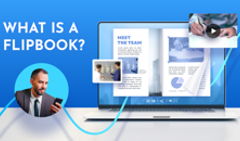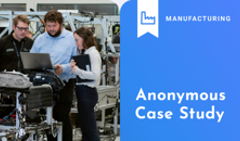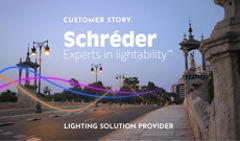We've just won a 2-million dollar contract because, on all things equal with the competition, the way we presented our proposal as a flipbook made us stand out.
|
Industry: Construction Product: FlippingBook Online |
One of our clients is a nationwide general contractor based out of Maryland, United States. The Company is rooted in construction and specializes in interior build-outs, new development, and full-service renovations. Most of their projects are from the hospitality sector, assisting brands like Marriott, Hilton, Hyatt, and Four Seasons with planned refurbishments. After more than 20 years in the business, the Company has tipped over a billion dollars in revenue, and the scale of their work can be anywhere from eight hundred thousand to sixty million dollars.
Challenge and Search for Solution
The Company traditionally relied on a more passive strategy for securing new business, and submitted project proposals in response to public bids. A typical proposal could range from 15 to 40 pages, depending on the scale of needed renovations. The team prepared it as a Word document with an executive summary, design concepts, preliminary sketches, and timelines—and emailed the file as a PDF.
However, as competition intensified and client expectations evolved, this approach began to falter. The team soon realized that their old method of handling documents was not just outdated: it was a significant barrier to engagement. The inability to connect with potential clients left the Company struggling to secure contracts, as their submissions often went unnoticed in a sea of generic bids.
Recognizing the need for change, the Company focused on proactive lead generation and invested in building initial relationships with customers. This shift required them to create more customized proposals, branded presentations, and engaging corporate brochures. Yet, despite their efforts, they found that their traditional PDFs fell short of effectively engaging prospects or providing valuable insights into their interests.
With any presentation, you've got about nine seconds to capture somebody's attention. Our PDFs weren't doing the job.
One of the employees was familiar with the flipbook format, so that's the direction the team explored. They signed up for a trial with FlipBuilder, but the tool didn't have document analytics—it was impossible to learn how a specific prospect interacted with the content.
FlipBuilder didn't have all the features that were important to us, so we quickly cancelled it and switched to FlippingBook.
Solution
At a glance, the Company found FlippingBook to be self-explanatory and easy-to-use. The smooth page flip effect and added interactivity effectively enhanced client engagement within the presentations. Prospects could now browse through pop-up galleries with design concepts, watch videos with past project overviews, and explore website portfolios through external flipbook links placed over images.
We also loved the hardcover option, as it presents the content beautifully, just like a real book. When you close the last page, you see that the book is done.
The team especially appreciated the feature of sharing flipbooks as individual trackable links. If they wanted to know whether a potential client had opened their proposal and how long they were reading it, all they had to do was check the statistics. The insights made for more targeted sales, too.
The time spent on page gives us good feedback about what's relevant to that client. And that is what we're going to focus on during our next call.
Results
Today, the team sees FlippingBook as a differentiator that sets them apart from competitors. Using the interactive flipbook format for corporate portfolios and brochures elevates the Company's brand image, impressing past customers and new prospects alike.
We've had customers that we've done business with for a very long time complement our materials. The new presentation raises the level of who we are, our importance, our professionalism.
The Company believes that the upgrade from PDFs has attracted more business, making FlippingBook's ROI substantial—as just one new project covers the cost of the annual subscription for several years to come. The team now plans to present their internal documents as flipbooks as well, including annual reviews and brand books.
The quality and presentation of your digital documents plays a crucial role in shaping your brand image. More than half of clients' first impressions are visual, and 45% of customers emphasize the importance of professional design. Do you want to elevate the look of your collateral and take your business to the next level?
Try FlippingBook for free →




